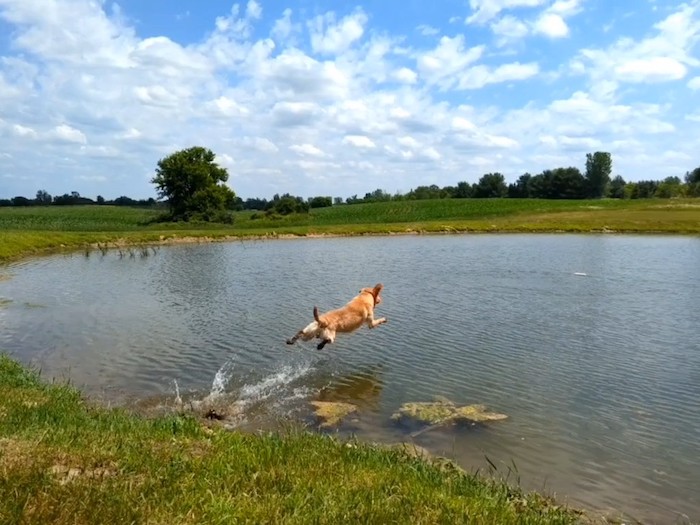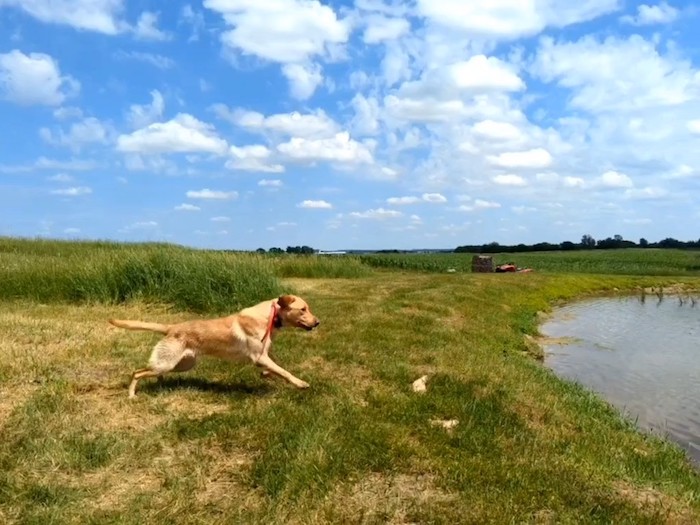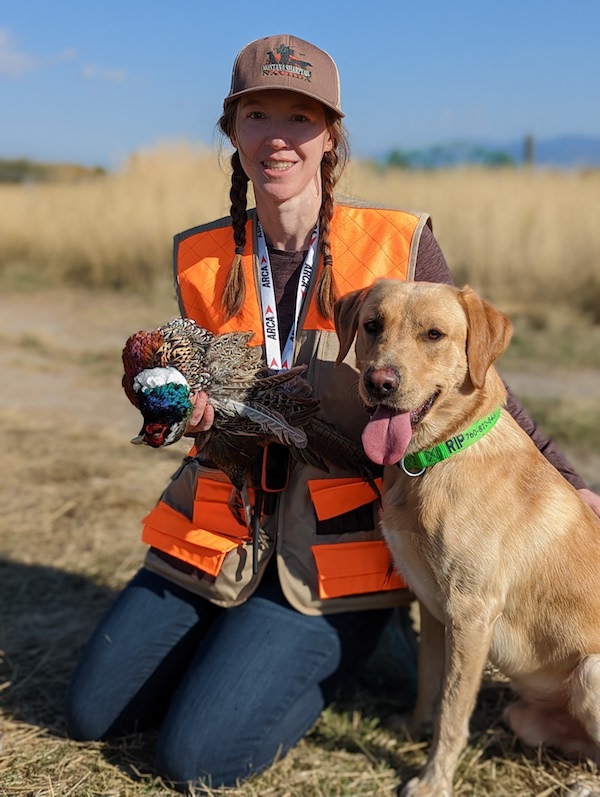Yes, board and train is worth it for the right dog and situation.
“Board and train” means your dog will stay with the trainer for a specified amount of time to work on obedience training. Usually the amount of time is 6 weeks or so, but it varies.
If board and train is in your budget and you are comfortable with the trainer’s knowledge and training methods, then it is a great investment.
I chose a board and train option for my yellow Labrador, and I am happy with this decision. When I get my next puppy, I will consider board and train again.
What is board and train?
Board and train means your dog stays with the professional trainer for a couple days, weeks or months while they work on training skills such as walking nicely on a leash, coming when called, sit, down and stay.
Usually, board and train takes place in a kennel environment with anywhere from 5 to 30 or more dogs in for training. The number of dogs should reflect the number of staff and the size of the facility.
Board and train could also take place at the trainer’s house. Typically, the trainer would only take in one client dog for training at a time or at most two or three dogs.
When board and train is at the trainer’s home, then that allows more opportunities to work on house manners such as training the dog not to bark at people and not to jump on people, counter surf or get into the trash, etc.
Is it good to send your dog away for training?
It depends on the dog and the situation. I’ll share why sending my dog away for training was the right option for us.
My yellow Labrador’s name is Rip. Before I got him in 2021, I spent many hours researching the right dog breed and the right breeder for our family.
I eventually decided on a Labrador from hunting lines because I wanted a large, athletic dog but one that would not be quite as energetic as my Weimaraner.
Once I decided on the right breed and breeder, I paid a deposit for a puppy knowing there was at least an 18-month wait list.
This gave me lots of time to plan out my training goals and budget for my future puppy.
I knew I wanted to train my Lab for upland and waterfowl hunting, but this was something I did not have experience doing.
I also knew that the breeder offered a board and train option for obedience and hunting dog training, so I thought this would be a great way for my dog to get some professional training.
The factor that helped me finalize my decision was when I found out I was pregnant on the very day I brought my puppy home!
I knew our Lab would be about 10 months old on our baby’s due date. This seemed like the perfect time to “send him away” to a board and train program while we adjusted to the new baby in our lives.
This worked out perfectly for our family.
It wouldn’t be ideal for all dogs. Some dogs would be really stressed to leave for a few months only to come back and there’s a new baby in the house!
I knew our gentle, easygoing Lab would not have an issue with a new baby. I was right. He thinks the baby is great!
A board and train program was right for us because:
- I knew and trusted my dog’s breeder, who was also his trainer
- I wanted help training my dog for hunting
- I was expecting my first baby and knew my time would be very limited
What age is best for a board and train puppy?
My Lab puppy went to a 3-week board and train program specifically for puppies when he was 5 months old.
This was a good age because he was mature enough to focus on the training.
The purpose of this 3-week program was to work on my future hunting dog’s bird and gun introduction. Basically, he got to chase and retrieve a lot of birds during those three weeks!
I wouldn’t send a puppy to a board and train program any younger than 5 months old.
This is because I want the puppy to learn about my life and my routine during those first few months. So much of a puppy’s “training” in those first few months is really socialization, potty training and getting into a routine.
When Rip was 10 months old, he went to a longer 14-week board and train program for “intermediate” gun dog training and obedience. This was a good age for the more intense training.
Once a dog is at least 8-9 months or so, they are probably ready for a board and train program. If they are younger than that, the program should be geared specifically for puppies.
Board and train pros and cons – Is it worth it?
Board and train for dogs certainly has its pros and cons. So I will list some of those here to help you decide if board and train is worth it for your dog.
Pros of board and train dog training
1. It’s a lot of fun to have a professionally trained dog!
I LOVE how attentive and obedient Rip is when I take him to agility or to the lake. Random strangers are impressed by his focus, and they will comment on what a great retriever he is.
This is fun for us! It’s fun to have a dog people admire!
Don’t get me wrong though, Rip is not perfect. He is still a young dog and still needs lots of reminders, practice and refreshers on things like heeling and stay. Dogs are not robots!
2. Board and train saves you a lot of time.
A professional trainer will be spending dedicated time training your dog every day. Most of us don’t have a lot of extra time on our hands to do this as we are juggling jobs, childcare and other responsibilities.
You will still need to spend some time every day working with your dog when he returns home! However, the strong foundation will already be set, so you will just be doing refreshers to keep your dog sharp.
3. Training is done correctly with proven methods
When your dog is trained by a professional trainer, then there are less chances of problems developing.
And if there are issues, the trainer should have enough experience with different dogs to come up with a solid plan to work through these problems.
4. Board and train will help you learn how to train your dog
Dogs are not robots and they will not magically behave perfectly in your home after they graduate from a board and train program.
A good trainer knows this, and they will spend quite a bit of time training YOU to train your dog.
I learned a lot about training a hunting dog by sending my dog away for training because the trainer touched base with me every week with a “report” to let me know what they’d worked on that week.
We were also invited to the training facility two times during the training and at “graduation” to watch demonstrations and to practice with Rip ourselves.
5. People tend to value what they spend money on
If you spend a lot of money on dog training, you’re probably going to take it seriously. You will research the best trainer and you will stick with the training even after your dog comes home because of the money you’ve invested.
If you train your dog yourself, it’s easy to just put the training off week after week and before you know it your dog is 2 years old and not trained to the level you’d prefer.
Cons of board and train dog training
1. The cost of board and train is usually quite high.
It varies from trainer to trainer. Our trainer is one of the best bird dog trainers in the country, and we paid $500 per week for training. This is probably on the high end, but you should still expect to pay a couple of thousand dollars overall.
2. It’s hard to be away from your dog for so long!
I think I handled being away from my dog well because I was focused on my new baby at home.
I did miss my dog of course, but I knew he was having a great time at training. He LOVES working and he was doing what he was bred to do – learning to retrieve birds.
3. You might have to travel to the trainer or ship your dog.
We live in Montana, but our trainer is in Wisconsin. Yes, I probably could’ve found a local trainer but I wanted the best for my dog.
I figured no one would be as invested in him than his own breeder, and our breeder has a very good reputation as a hunting dog trainer.
I am lucky that my parents live in Wisconsin, only an hour from the trainer. They were willing to drive all the way out to Montana to pick Rip up and deliver him to training. Not everyone has this option.
You might need to spend a few days driving your dog to the trainer, depending on where they are located. Or, you may need to consider flying your dog to the trainer. Some trainers will offer to pick your dog up from the airport.
4. You must continue your dog’s training, of course!
Dogs will push the boundaries to see what they can and cannot get away with.
Rip behaved almost perfectly when we went to the training demos and the graduation day at the training facility. But when we got home, he hardly responded to us at all!
This is because dogs are so contextual.
My dog had spent months working on heeling with his trainer in Wisconsin. He had not practiced this in Montana.
So he went back to his usual habits in our house – pulling!
It was up to us to work on the training with him that he’d learned so he knew he had to be obedient in all contexts, not just at the training facility in Wisconsin.
Dog training is a process, and it is ongoing throughout a dog’s life.
5. You MUST do your research on the dog training facility.
Do not assume the board and train program is right for you. You need to put in extensive research to make sure it is right for you and your dog.
For example, a lot of board and train programs use slip collars and a “pressure on, pressure off” method for leash training. Are you OK with this?
Many board and train programs use e-collars for obedience. I wanted my dog trained on an e-collar so I can communicate with him from hundreds of yards away in the field. But are you OK with this type of training?
There are also some board and train programs that use strictly positive reinforcement training. You need to do the research to choose which trainer is right for you and your dog.
I recommend you read all the reviews you can and to ask for references. Call or email those references and ask questions. You want to be 100% comfortable with the trainer you choose.
Will my dog still love me after a board and train program?
Yes, your dog will still love you if you “send him away” or training.
I did wonder if my dog would remember me and the rest of my family. He was only 10 months old when he went to training and he was there for 3.5 months.
But of course he remembered us! And he remembered our home and our cat and our other dog. He was overly excited for a few days but then he settled back into a routine just fine.
So is board and train worth it?
In my experience, yes. Board and train was worth it for my Labrador. He had a great time, and now I have a young dog with a solid foundation for obedience and hunting.
We took him on his first pheasant hunt this fall, and he did great! He got to retrieve three birds, and he had the time of his life!
I’m excited to continue working with my dog on his obedience and hunting foundation.
If you have questions about board and train or if you’ve used this type of training, please let us know in the comments below!



